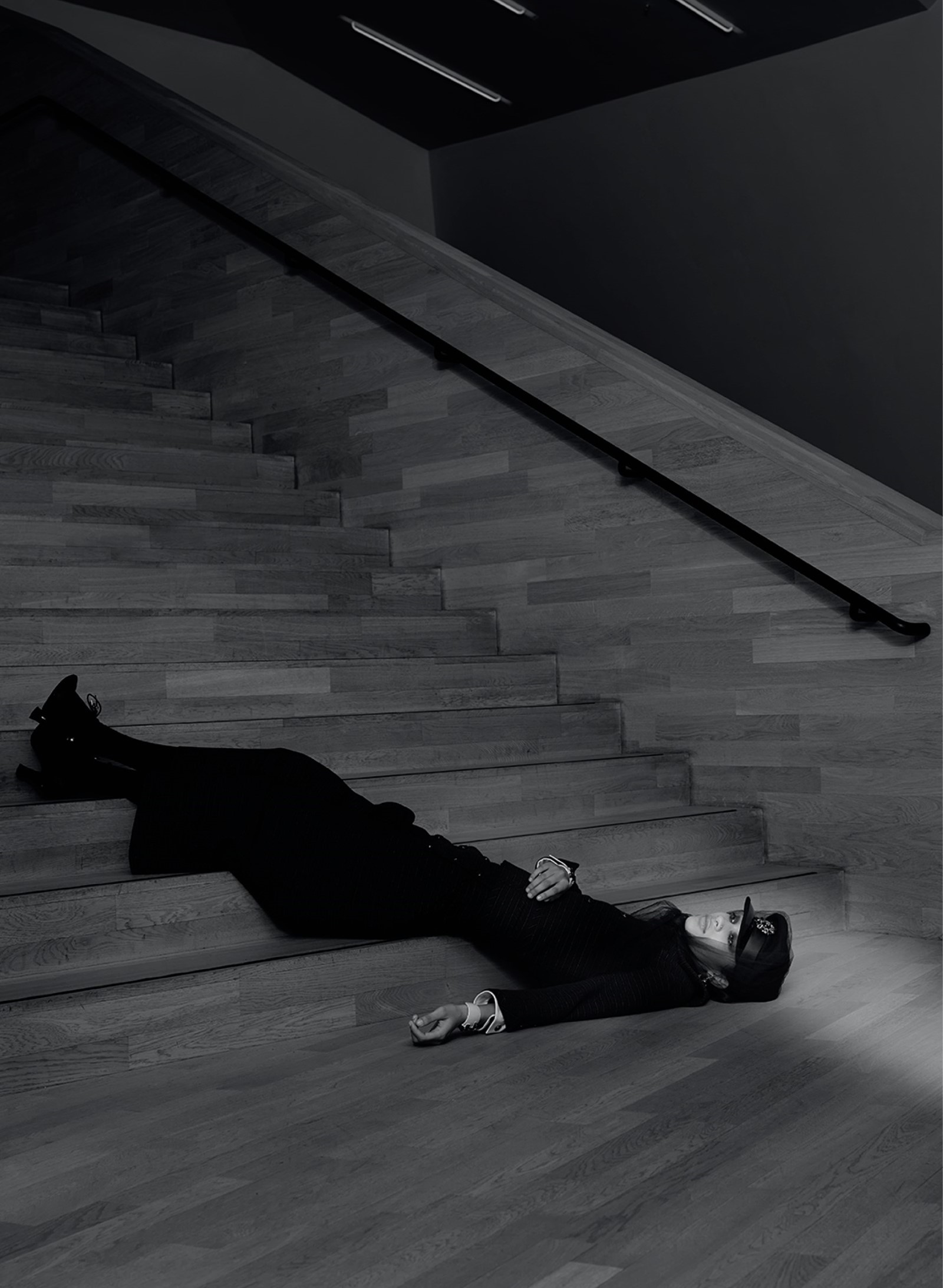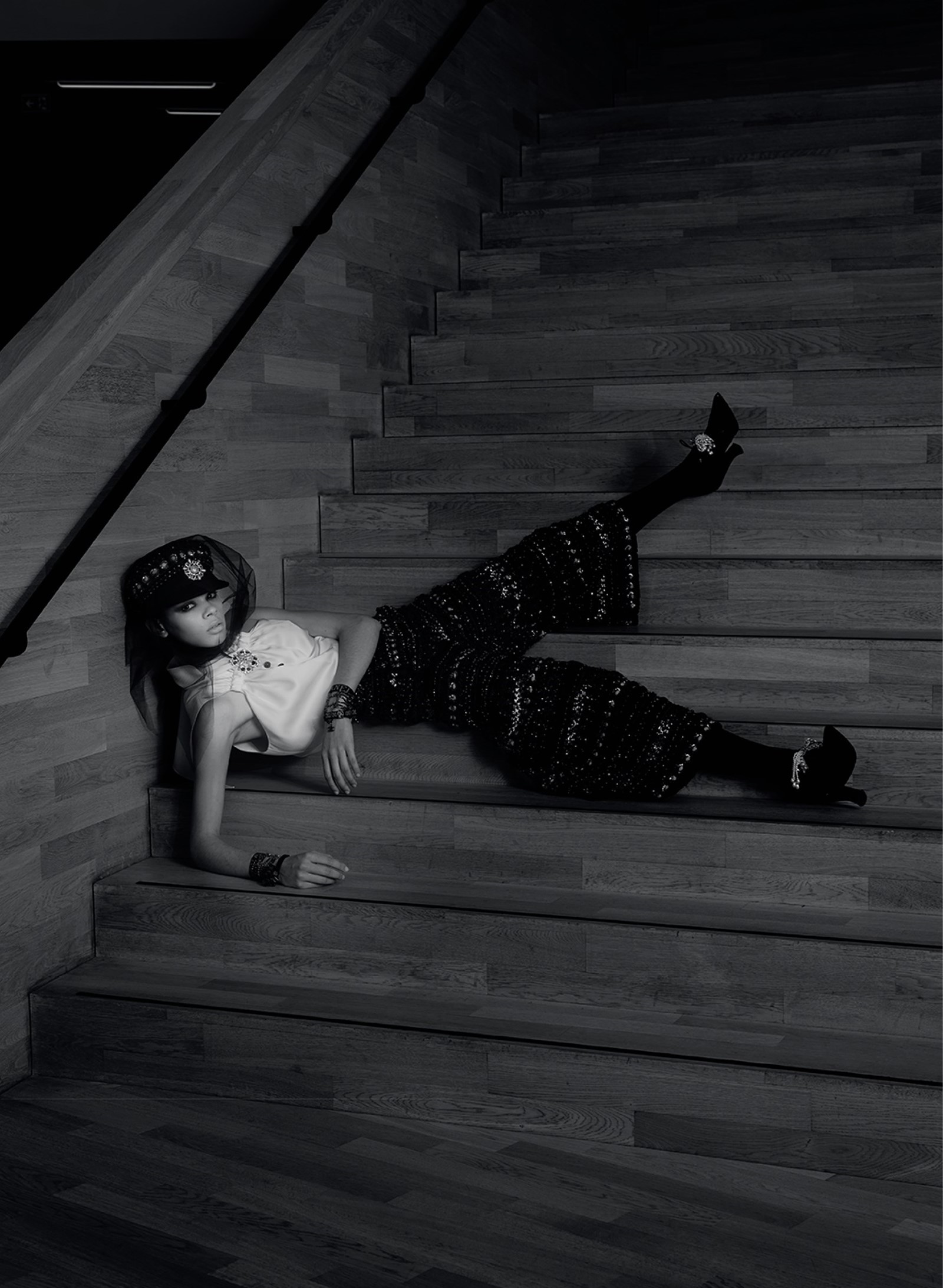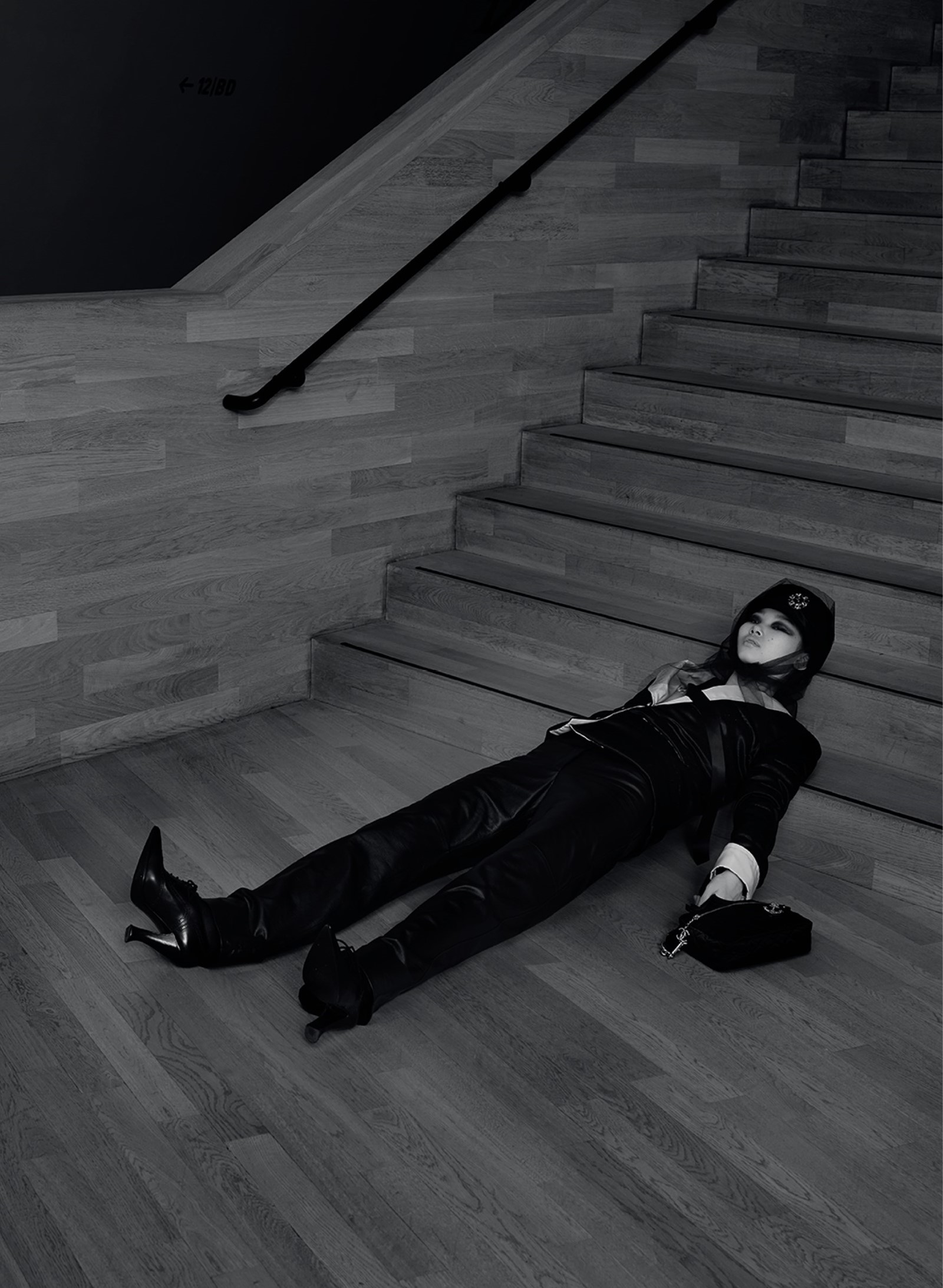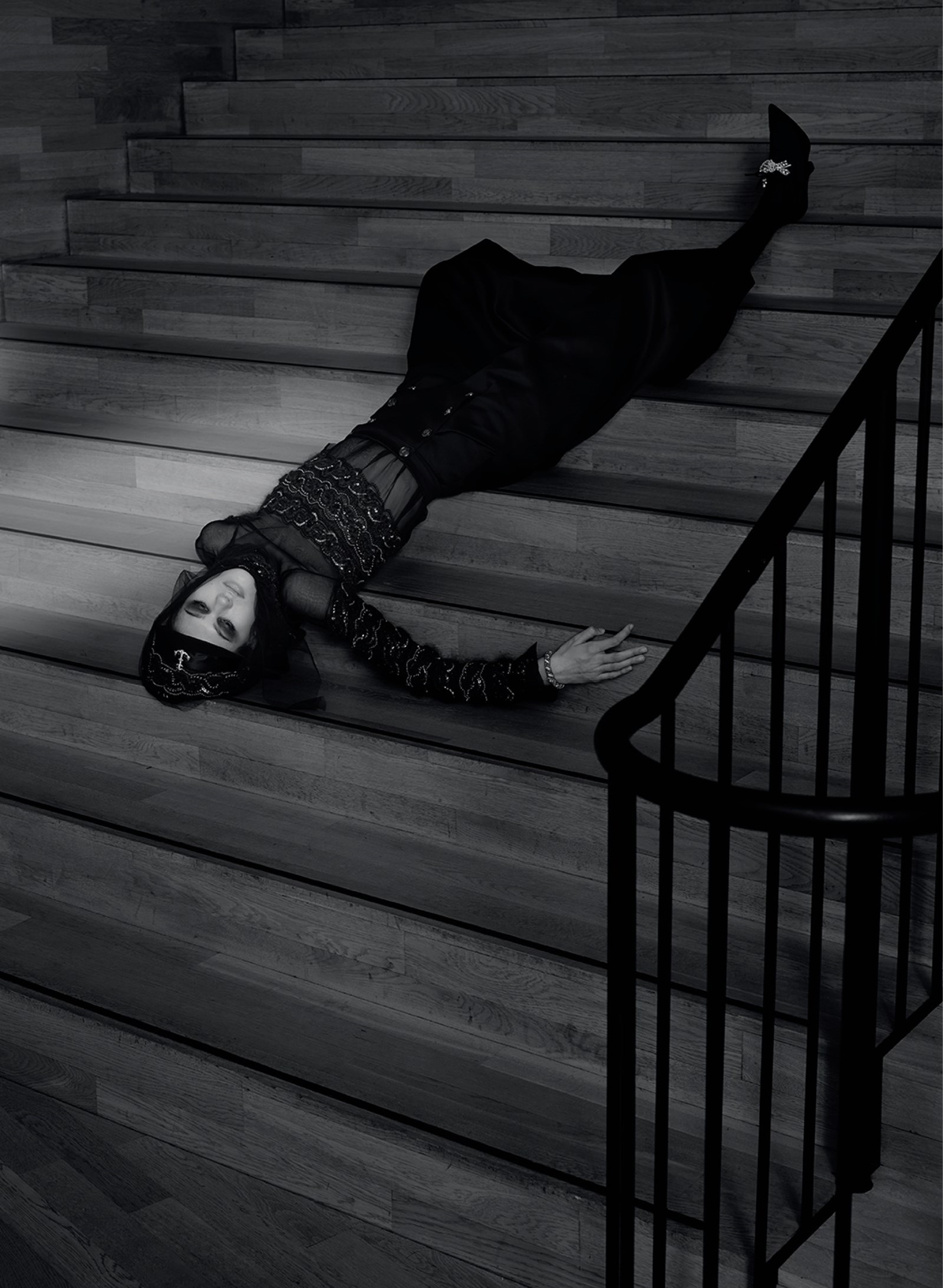Built on top of the classic red-brick 1963 Kaispeicher A tea, tobacco and cocoa warehouse, Jacques Herzog and Pierre de Meuron’s trapezoid glass Elbphilharmonie rises up over the River Elbe in Hamburg like a monumental glass wave. Ensconced inside, Karl Lagerfeld describes the creative brains behind the imposing construction as “the greatest architects in the world. I love all the red-brick houses and then suddenly this strange structure in the middle of them. It’s not like any other skyscraper in the world.”
The space opened its doors in January last year; its main hall seats more than 2,000; and its construction was the inspiration behind Lagerfeld showing his 2018 Métiers d’Art collection in that city, he says. Of course, Hamburg is also the place Lagerfeld was born and raised, which doubtless adds a certain romance to the proceedings. For us, at least, if not for him. Lagerfeld is relentlessly forward-looking: in picking an ultra-modern addition to Hamburg’s age-old skyline, he ensured this collection was not a homecoming. Rather, a new departure.


Not all things have run entirely smoothly. Part of the building is a hotel where the Chanel team, as well as models male and female, are in residence for the duration. “From the rooms the views are even more stunning,” Lagerfeld says, “because you can see the whole harbour around you. The windows are six-, maybe seven-metres high. But we had a bad night because some models were smoking and the alarm went off at four in the morning. The noise: you have no idea. Choupette fell out of the bed.” Yes, he means his cat. “She’s up there now with her personal maid. The suite I have is beyond enormous. You walk for hours to get to the bathroom.”
We are speaking immediately after the Chanel collection in question was shown: a full orchestra provided a specially commissioned soundtrack; a skin of 10,000 gypsum fibre panels ensures flawless acoustics. The annual Métiers d’Art collection was conceived in 2002 to showcase the unparalleled craftsmanship of Chanel-owned specialist ateliers. These include Maisons Lesage and Montex (embroidery), Lemarié (feathers and flowers), Michel (hats), Barrie (knitwear) among many more esoteric (the pleating house Lognon, the buttonmaker Desrues). They have all been acquired by the company over the past three decades in order to preserve the skills of the men and women who work there, many of whom have done so for decades and pass any expertise down to generation after generation. The companies were grouped together in a special subsidiary, established in 1997 – it’s named Paraffection SA – derived from the French translation of ‘for the love of’. Staged in locales as varied as Salzburg, Dallas and Shanghai, each Métiers d’Art show also references the city in which it is shown: in this case the maritime dress and sailors’ uniforms in particular that characterise Hamburg’s historic port.
“I don’t do this to make something look like me. I don’t make an inspiration board, I’m not a marketing person. Nobody tells me we should do this, this and this. Most of the things I see when I’m sleeping. I have a sketch pad by my bed and I put down the idea before I fall asleep again” – Karl Lagerfeld
In fact, Gabrielle Chanel herself drew on just such inspiration, from sailor trousers to Breton tops which she designed as far back as 1917. Throwing a typical curveball, Lagerfeld denies he understands this regional vocabulary better than most, despite presumably encountering it first-hand as a young boy. Not that he ever wore it he explains. “In fact, to be different from everybody, I used to wear Tyrolean clothes. Nobody had them,” he says. “My family were not fishermen, sailors or captains.”


Still, this grand couturier is able to appropriate and reappropriate such a well-oiled reference like none other. Oversized navy fisherman knits and equally roomy (and warm) over-the-knee socks (knitted by Barrie), sailor caps worn with every exit and embellished with plaited braid, jewelled brooches (by costume jeweller Goossens) and at times, with a nod to Chanel’s Parisian heart, shrouded in tulle (by Maison Michel), sailor collars and pants, peacoats and matelot-striped, feather embroidered cocktail dresses (Lemarié), all made for seamlessly lovely viewing. They appeared as true to the codes of Chanel as they did to Lagerfeld himself. After 35 years at the helm of the house it’s not easy to know where one begins and the other ends, after all. “I don’t do this to make something look like me. I don’t make an inspiration board, I’m not a marketing person,” Lagerfeld quips. “Nobody tells me we should do this, this and this. Most of the things I see when I’m sleeping. I have a sketch pad by my bed and I put down the idea before I fall asleep again.”
Even so, he will finally admit, uncharacteristically, that although now as always his eyes are firmly on the present and future, there was a certain nostalgia at play.
“Nostalgia can be a positive feeling as long as it’s not mixed with sadness but just a light touch of melancholy. But melancholy in the 16th- and 17th-century sense of the word” – Karl Lagerfeld
“Nostalgia can be a positive feeling as long as it’s not mixed with sadness but just a light touch of melancholy,” he says before adding: “But melancholy in the 16th- and 17th-century sense of the word.” Melancholy – an immense sadness, a note of despair and a fashionable sense of suffering at the approaching end of times. That relates to the departing mariners of Hamburg as well as, perhaps, the temporality of fashion itself. Doesn’t it?
“I’m not a teacher. You’re English. Read Marlowe,” Karl Lagerfeld says.
All clothing and accessories from the Chanel Métiers d’Art 2018 collection.
On-set hair: Declan Sheils at Premier Hair and Make-up. On-set make-up: Shelley Blaze at Calliste. Models: Selena Forrest and Hiandra Martinez at Next, Lex Herl at Ford Paris, Runa Neuwirth at Viva and Yoon Young Bae at Elite
This story originally featured in the Spring/Summer 2018 issue of AnOther Magazine, which is on sale now.
